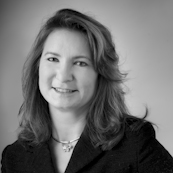California’s Take On Mold Claims, Expert Testimony, And The Two-Part General And Specific Causation Test
March 15, 2010
News and Views on Environmental & Toxic Tort Federal and State Legal Issues and Developments
March 15, 2010
Guest Blogger M.C. Sungaila is a partner in the appellate law firm of Horvitz & Levy in Los Angeles. Her appellate work has helped shape toxic tort law in California, including the scope of the duty to warn sophisticated users of product hazards and the guidelines for admitting expert testimony at trial. 
Toxic Tort Litigation Blog’s post earlier this year about a Michigan appellate court’s affirmance of an award to residents of a home overrun with mold – without any expert testimony to prove causation – raises the question: what would happen to such a claim in a more famously liberal state like California? In this instance at least, California seems more likely to come to a more ‘conservative’ conclusion than Michigan.
Expert Testimony
California not only requires expert testimony for complex causation questions; it tests the foundation for that testimony and requires trial courts to exclude expert opinions that are unsupported. See an early article describing the development of these standards by M.C. Sungaila and David M. Axelrad published in California Lawyer. The California courts of appeal have specifically considered the admissibility of expert testimony in mold cases and ruled in favor of the defendants. Most recently, in Dee v. PCS Property Management, one of the appellate divisions in Los Angeles confirmed the trial court’s ability to exclude unfounded expert testimony in a residential mold case. Darcee Dee lived in an apartment for slightly over four months. She sued her landlord and property management company for alleged physical injuries, as well as fear of cancer, from living in an apartment that purportedly had toxic mold in it. After hearing the plaintiff’s experts testify over several days concerning their opinions and the foundation for them, the trial court granted the defendants’ motions in limine to exclude most of the experts’ testimony based on a lack of foundation. The remaining portions of Dee’s claims were tried to a jury, and the jury rejected her claims. The appellate court affirmed the judgment in Dee, concluding that the trial court did not abuse its discretion by excluding plaintiff’s experts for lack of an adequate foundation. Each of Dee’s experts sought to testify that her exposure to mold mycotoxins caused her symptoms and her susceptibility to cancer, without any evidence that she was exposed to potentially harmful mycotoxins at her residence. The court relied on the decision in another mold case, Geffcken v. D’Andrea, and distinguished its own prior decision in Roberti v. Andy’s Termite, the only published opinion to have rejected the trial court’s authority under the California Evidence Code to thoroughly analyze the foundation for expert testimony in order to determine its admissibility. For another take on the Geffcken and Dee mold decisions, see an article on the Kring & Chung LLP website.
Toxic Tort Causation Standards
While California appellate courts would be certain to require expert testimony on causation, it is not as clear how they would analyze causation in a toxic tort case. In toxic tort cases, a plaintiff must generally prove not only that a chemical or substance can cause a particular adverse health effect but also that it did cause the harm to the plaintiff. Proof of causation therefore necessarily includes a threshold determination whether, as a matter of reasonable medical probability, a particular chemical is capable of causing in humans the type of harm suffered by the plaintiff (i.e., “general causation”). If the answer is that the chemical does not possess that capacity, then the chemical cannot have been a cause of plaintiff’s harm. But if the chemical does have that capacity, then the causation inquiry (in jurisdictions like California which apply a substantial factor causation standard) becomes whether the plaintiff’s exposure to the chemical in question was as a matter of reasonable medical probability a substantial factor in causing the particular plaintiff’s harm (i.e., “specific causation”). For a helpful analysis of causation in toxic tort cases, see the excellent discussion by David E. Bernstein, a Professor at the George Mason University School of Law, in an article titled "Getting to Causation in Toxic Tort Cases". This two-step general and specific causation framework is almost universally accepted by federal courts analyzing toxic tort causation (including the Ninth Circuit, see, e.g., Golden v. CH2M Hill Hanford Group, Inc. (9th Cir. 2008) 528 F.3d 681, 683). Trial courts in California have analyzed proof of causation in toxic tort cases along general and specific causation lines as well. California appellate courts have not, however, expressly adopted the general and specific causation distinction in a published decision. This has led to some confusion, as plaintiffs have attempted to convince courts that such a “two-part”causation test is incompatible with California’s prevailing causation standards. In Dee v. PCS Property Management, the plaintiff raised this argument on appeal, but the Court of Appeal declined to reach it because the jury had found no negligence, which made an argument about causation standards “irrelevant.” An opportunity to address the general and specific causation distinctions head-on may come later this year, however, when the Court of Appeal in Los Angeles is likely to hear argument in and decide the plaintiffs’ appeal of summary judgment in a high-profile benzene exposure case brought by former students at Beverly Hills High. The appellate docket for the case, Lee v. Venoco, is attached here. The original summary judgment decision ruled on the admissibility of expert opinion on both general causation and specific causation.